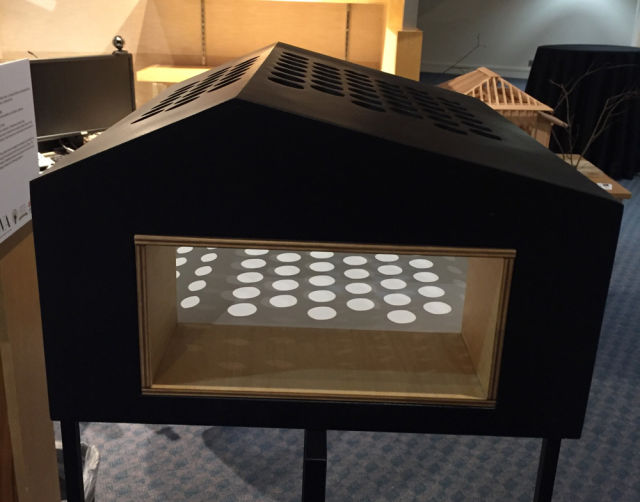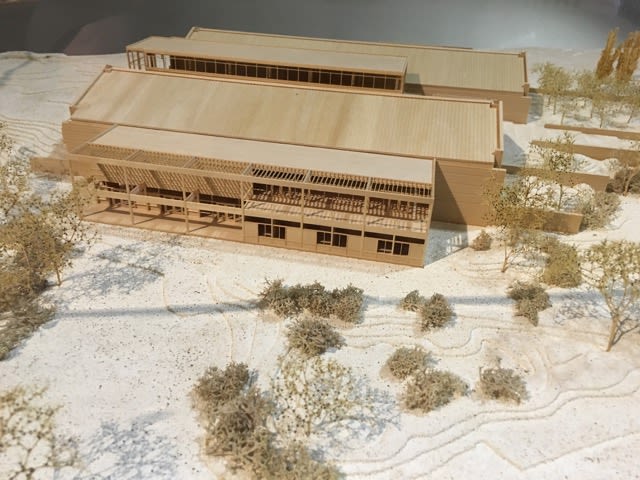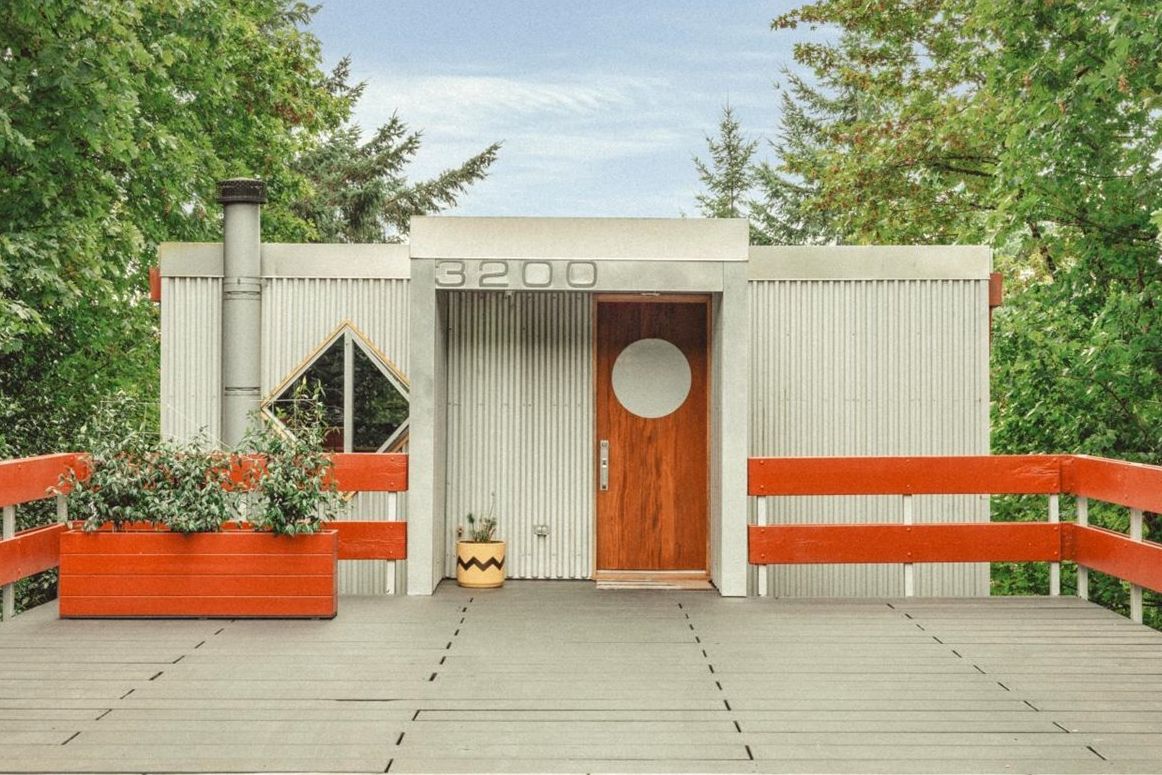Real Architects Make Their Models Out of Wood

A model by Portland architect Ben Waechter.
The Washington Park campus of the World Forestry Center is practically a shrine to Oregon’s lumber industry. The cozy, woodsy structures are all essentially circular, with one exception: the crescent-shaped Merlo Hall. Designed in 1988 by local architects John Storrs and William Church, the unusual edifice contains large, sweeping wooden rafters and an atrium with a great clear globe in the center of the ceiling. The semi-translucent roof admits a soft glow of natural light.
This Northwestern architectural treasure serves as an appropriate setting for the Architectural Wooden Model Exhibit, a collaboration between the World Forestry Center and the Architecture Foundation of Oregon featuring impressively detailed wooden models of all manners of buildings, both relatively local and out of state.
World Forestry Center executive director Eric Vines explains the process of accumulating these miniature architectural feats: “We put out a call to architects, and the firms were really excited. They pulled these models out of their closets and out of storage and dusted them off. Some of them are very simple and conceptual, and others are very intricate and detailed.”
Wooden models have been key to the field of architecture for centuries—even mentioned in the ancient classical world—and they continue to be used by the contemporary industry. Rough blocking models help architects in the early stages of spatial thinking, while refined versions communicate the completed vision of an architect to their audience, such as potential investors, donors, or clients. Even the ease of digital imaging hasn't rendered the medium obsolete: there is really no substitute for a physical model.

The models are to-scale, but with the advantage of a bird’s eye perspective, the viewer can consider the complete structure in a unique way. For example, the student-made model of the Springfield Mass Timber Parking Garage for Glenwood Parks proves an unlikely specimen of beauty. The parking garage stacks gracefully like a layer cake of lumber, and while the individual design elements such as columns emerge to the eye, one also can’t help but consider the problem solving that even goes into something as mundane as a parking structure. “I think the average person would never have considered that models could be approached in such a great variety of ways,” says Jane Jarrett, executive director of the Architecture Foundation of Oregon.
The exhibit is open through February 26, and is free to the public. Come peer into an ancient modeling system that has no signs of disappearing—or simply attend to feel like the Godzilla of a quaint wooden town.




